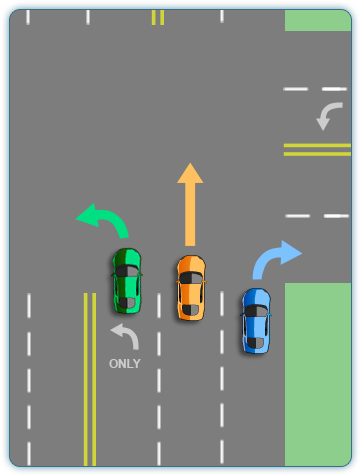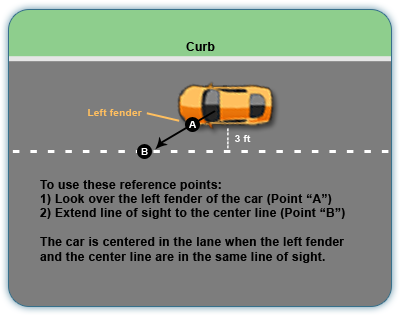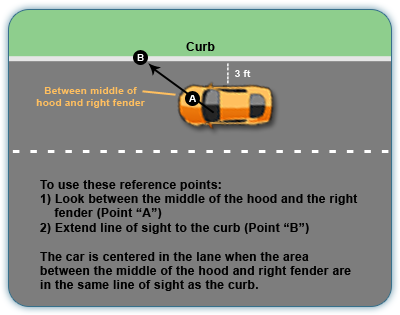In most instances, you should drive in the right lane and pass on the left. Check out our blog post on left lane driving laws to learn more about when it’s legal to drive in the left lane in your state. Once you know which lane you should be driving in, you can focus on your position within that lane.
We use lane positions to communicate our intentions to other drivers, and to best position the vehicle for a driving maneuver. There are three lane positions you need to be aware of, and we’ll look at each one in this post!

Lane Position 1
The first lane position is in the center of the lane. You will use Lane Position 1 for normal driving conditions. This position allows you to have the best separation and distance from obstacles like other vehicles, curbs, and medians to the right and the left of your vehicle. If you are not planning to make any driving maneuvers, like turning, for a while, stay in Lane Position 1.
Lane Position 2
Lane Position 2 is the left side of the lane. This is when your vehicle is positioned to the left of the lane while still within the lane markings. This position allows for best separation from obstacles on the right. You would want to be in Lane Position 2 if, for example, there was a car stopped on the shoulder and you were unable to safely merge into the lane to your left. You should also use Lane Position 2 for left turns and parking on the left.
Lane Position 3
Lane Position 3 is the right side of the lane. This gives you the best separation from obstacles on the left and helps to improve your line of sight. You can use Lane Position 3 for right turns and parking on the right.
Lane Position and Reference Points
To recap: Lane Position 1 is the center of the lane, Lane Position 2 is the left side of the lane, and Lane Position 3 is the right side of the lane. You can use reference points to make sure you’re in the correct lane position.
There are four reference points you can use to make sure your vehicle is centered in Lane Position 1. The first two reference points are on your left side. Use the left fender as your first reference point. We’ll call this Point A. Next, use the center line as your second reference point. We’ll call this Point B. When the left fender of your car (Point A) lines up with the center line (Point B) in your line of sight, then your car is about 3 feet from the center line, meaning it is centered in your lane.

You can also use two reference points on the right side of your vehicle to make sure you are centered within your lane. To do this, use the point halfway between the middle of your hood and your right fender as your first reference point. We’ll call this Point A. Next, use the curb or edge of the roadway. We’ll call this Point B. When this point on your hood (Point A) matches up with the curb (Point B), your car should be about 3 feet from the curb, or centered within your lane.

Drivers should pay special attention to their position in their lane. One of the reasons distracted driving is so dangerous is that you can easily veer into another lane while distracted, which can cause a collision.
Let us help prepare you for any driving situation. Taking an online defensive driving course or an insurance discount course is a great way to help prepare you for any type of driving situation! Click here to visit our website to see the online courses we offer in your state!